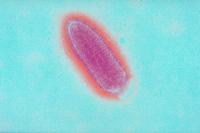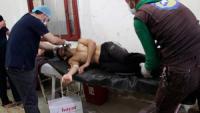-
AgTech innovator raises $7.5 million to help develop precision agriculture
Today, the Ag industry loses more than $300 billion each year due to crop diseases and pests. Pests and diseases can destroy crops and devastate farmers’ agricultural yield, but chemical overuse comes with its own set of challenges, including pesticide-resistant disease strains. Meanwhile, rising temperatures and increasing levels of carbon dioxide create more challenges for farmers as crop pests and disease thrive in hot, CO2-rich environments. Taranis, a precision agriculture intelligence platform, announced it has closed a $7.5 million Series A round of financing. Taranis says it aims to lead the digital farming revolution by giving farmers around the globe the ability to predict and prevent detrimental threats to their crops—and bottom line.
-
-
Europe’s economy vulnerable to global water scarcity, drought
A new study of the impacts that increasing water scarcity and drought may have on the European Union’s (EU) economy finds that around 38 percent of the EU’s water demand lies outside its borders because many of the goods consumed by its citizens or used by its businesses are produced abroad. “The highest risk that the European meat and dairy sector will face due to climate change and weather extremes lies outside its borders. This is because it is highly dependent on soybean imports from locations that are vulnerable to water scarcity and drought,” says one expert.
-
-
Killing drug-resistant bacteria dead with bioinspired agent
Microbial resistance to antibiotics and biocides is increasing, and our ability to effectively treat bacterial infections and contamination is under threat. It is important that scientists develop new antibiotic drugs, but we also need new strategies to deal with bacterial contamination that are not reliant on antibiotics. Researchers have developed a bioinspired antimicrobial treatment that can rapidly kill drug-resistant bacteria. The treatment consists of iodo-thiocyanate complexes, which are inspired by enzymes and reactive molecules produced by our immune system.
-
-
Sanitizers made of paper kill bacteria dead
Imagine wearing clothes with layers of paper that protect you from dangerous bacteria. Now you can: Researchers have invented an inexpensive, effective way to kill bacteria and sanitize surfaces with devices made of paper. The motivation for the invention was to create personal protective equipment that might contain the spread of infectious diseases, such as the devastating 2014 outbreak of Ebola in West Africa.
-
-
Urban legend: WWI-era “viable” anthrax strain was, in fact, much younger standard laboratory strain
A team of international researchers has found that a strain of anthrax-causing bacterium thought to have been viable eighty years after a thwarted First World War espionage attack, was, in reality, a much younger standard laboratory strain. The team speculates that the mix-up was due to commonplace laboratory contamination. In 1917, German spy Baron Otto von Rosen was caught in Norway possessing lumps of sugar embedded with glass capillaries filled with a liquid holding spores of Bacillus anthracis, the bacterium that causes anthrax. He was suspected of plotting to feed the sugar lumps, which contained the oldest known isolates of B. anthracis, to the reindeer that pulled transports of munitions and foods across the frozen Arctic tundra for the Allied forces.
-
-
Differentiating viral and bacterial infections

MeMed, an Israeli company specializing in molecular immunology, informatics, clinical infectious diseases and in vitro diagnostics, last week announced it has been awarded a $9.2 million contract by DoD’s Defense Threat Reduction Agency (DTRA) to fund the completion of MeMed’s point-of-care platform for distinguishing bacterial from viral infections.
-
-
International anthrax conference will explore latest scientific research findings
Scientists and researchers from all over the world who work on Bacillus anthracis, the causative agent of anthrax, and B. cereus and B. thuringiensis, two closely related bacillus species, will be heading to Victoria, British Columbia, in October for the international conference known as “Bacillus ACT.” The bi-annual conference, set for 1-5 October, will allow members of the scientific community to present their work and meet more than 200 global peers.
-
-
Bioterrorists, using genetic editing, could kill more than 30 million people: Bill Gates
A bioterrorist attack could kill thirty million people — and such an attack is becoming more likely because it has become much easier to create – or “design” — deadly pathogens and spread them. Bill Gates, Microsoft founder, speaking in London, said that an outbreak of a lethal respiratory virus like smallpox would be more dangerous than even a nuclear attack. Anyone can now purchase chemistry kits which allow genetic editing, and do so online for under $150.
-
-
Preventing yellow fever resurgence
Many people might not have heard of the Aedes aegypti mosquito until this past year, when the mosquito, and the disease it can carry – Zika – began to make headlines. But more than 220 years ago, this same breed of mosquito was spreading a different and deadly epidemic in Philadelphia and just like Zika, this epidemic is seeing a modern resurgence, with Brazil at its epicenter. “The challenge with diseases like yellow fever and Zika is that the conditions that foster an outbreak are not always avoidable, especially in tropical climates, and therefore a vaccine is needed to prevent infection,” says one expert.
-
-
Improving speed, effectiveness of clinical trials during an epidemic

Mobilization of a rapid and robust clinical research program that explores whether investigational therapeutics and vaccines are safe and effective to combat the next infectious disease epidemic will depend on strengthening capacity in low-income countries for response and research, engaging people living in affected communities, and conducting safety trials before an epidemic hits, says a new report. Using key lessons learned from the Ebola epidemic in West Africa, the report outlines how to improve the speed and effectiveness of clinical trial research while an epidemic is occurring, especially in settings where there is limited health care and research infrastructure.
-
-
A big-picture look at the world’s worst Ebola epidemic: West Africa, 2013-2016
The 2013-2016 West African Ebola epidemic dwarfed all previous central African outbreaks of the virus, sickening more than 28,000 people and killing more than 11,000 of them. New study of the epidemic reveals insights into factors that sped or slowed the rampage – for example, that the epidemic unfolded in small, overlapping outbreaks with surprisingly few infected travelers sparking new outbreaks elsewhere, each case representing a missed opportunity to break the transmission chain and end the epidemic sooner. Scientists call for using real-time sequencing and data-sharing to contain future viral disease outbreaks.
-
-
Improving predictions of outbreaks of Ebola, Lassa fever
Many of the major new outbreaks of disease, particularly in Africa, are so-called zoonotic infections, diseases that are transmitted to humans from animals. The Ebola virus, for example, which recently killed over 11,000 people across Africa, was most likely transmitted to humans from fruit bats. Potential outbreaks of diseases such as Ebola and Lassa fever may be more accurately predicted thanks to a new mathematical model developed by researchers at the University of Cambridge. This could in turn help inform public health messages to prevent outbreaks spreading more widely.
-
-
In West Africa, investment key in adapting to climate change
Climate change will likely have negative impacts on food production in West Africa, with crop yields and grass for livestock grazing likely to decline in the future. A new study provides insights on how strategic planning by decision makers could ease or exacerbate food security challenges in the region.
-
-
Medical evidence confirms sarin gas was used in Syria chemical attack

Turkey’s health minister said that traces of sarin gas have been detected in blood and urine samples from victims injured in the town of Khan Sheikhun in Syria on 4 April, offering “concrete evidence” of its use in the attack. Isopropyl methylphosphonic acid, a chemical which sarin degrades into, was found in the blood and urine samples taken from the patients who arrived in Turkey. Many of the victims of last week’s attack were taken to Turkey for treatment because the Assad regime and Russia, as part of their war strategy, have destroyed many of the medical facilities in the Sunni areas of Syria.
-
-
Enzymes versus nerve agents: Designing antidotes for chemical weapons

Nerve agents, a class of synthetic phosphorous-containing compounds, are among the most toxic substances known. Brief exposure to the most potent variants can lead to death within minutes. Once nerve agents enter the body, they irreversibly inhibit a vitally important enzyme called acetylcholinesterase. Its normal job within the nervous system is to help brain and muscle communicate. When a nerve agent shuts down this enzyme, classes of neurons throughout the central and peripheral nervous systems quickly get overstimulated, leading to profuse sweating, convulsions and an excruciating death by asphyxiation. There is a path to mitigate the danger of chemical weapons. This route lies within the domains of science – the very same science that produced chemical weapons in the first place. Researchers in the United States and around the world are developing the tools needed to quickly and safely destroy nerve agents – both in storage facilities and in the human body. There are promising advances, but no enzyme yet exists which is efficient enough for lifesaving use in people. It is worth keeping in mind the awesome and often complex power of science, however: We may be only a few years away from developing the kind of therapeutics that would make chemical weapons a worry of the past.
-
More headlines
The long view
Are We Ready for a ‘DeepSeek for Bioweapons’?
Anthropic’s Claude 4 is a warning sign: AI that can help build bioweapons is coming, and could be widely available soon. Steven Adler writes that we need to be prepared for the consequences: “like a freely downloadable ‘DeepSeek for bioweapons,’ available across the internet, loadable to the computer of any amateur scientist who wishes to cause mass harm. With Anthropic’s Claude Opus 4 having finally triggered this level of safety risk, the clock is now ticking.”
A Brief History of Federal Funding for Basic Science
By Jake Miller
Biomedical science in the United States is at a crossroads. For 75 years, the federal government has partnered with academic institutions, fueling discoveries that have transformed medicine and saved lives. Recent moves by the Trump administration — including funding cuts and proposed changes to how research support is allocated — now threaten this legacy.
Vaccine Integrity Project Says New FDA Rules on COVID-19 Vaccines Show Lack of Consensus, Clarity
By Stephanie Soucheray
Sidestepping both the FDA’s own Vaccines and Related Biological Products Advisory Committee and the CDC’s Advisory Committee on Immunization Practices (ACIP), two Trump-appointed FDA leaders penned an opinion piece in the New England Journal of Medicine to announce new, more restrictive, COVID-19 vaccine recommendations. Critics say that not seeking broad input into the new policy, which would help FDA to understand its implications, feasibility, and the potential for unintended consequences, amounts to policy by proclamation.
